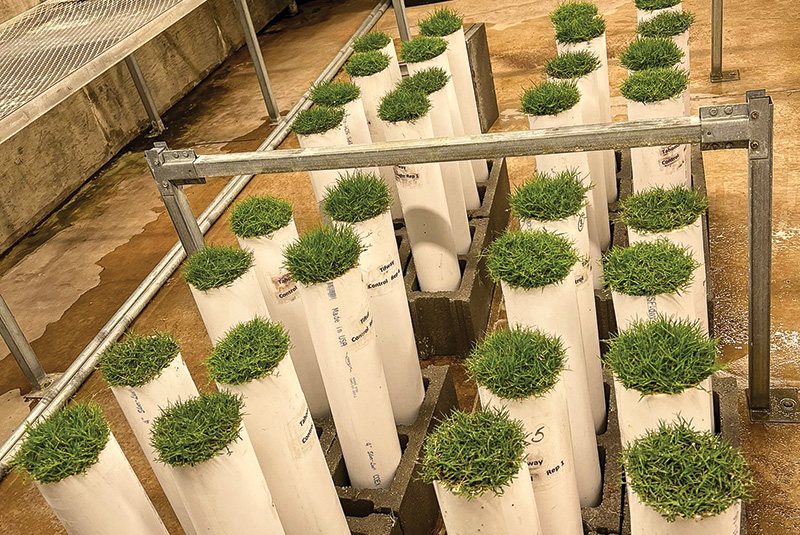
Figure 1. Establishment stage of the experiment. Photo by Snigdha Arikilla
Irregular precipitation patterns have led to more frequent droughts, posing critical challenges for turfgrass management. Drought stress, caused by prolonged dry periods and limited water availability, has severely impacted turfgrass quality and health. For turfgrass managers in various sectors, including golf courses, sports fields, landscapes and others, maintaining functional turf during drought is essential but increasingly challenging. Selecting drought-resistant turfgrass species and varieties can significantly reduce irrigation needs, lowering management costs and thereby contributing to water conservation efforts. To address these challenges, turfgrass scientists have focused on identifying and developing drought-resistant turfgrass varieties.
Hybrid bermudagrasses: A promising solution for drought conditions
Hybrid bermudagrasses (Cynodon dactylon x C. transvaalensis) are known for their drought resistance, heat tolerance and rapid recovery (2, 3). They are one of the most promising turfgrass species for arid and semi-arid regions or areas where water conservation is a priority. However, even within this species, considerable variation exists in drought resistance. Comparative physiological analyses have revealed that these differences may be attributed to factors such as osmolyte accumulation and the efficiency of their antioxidant defense systems in responding to varying water statuses (8). Additionally, significant variations in evapotranspiration (ET) rates have been reported among bermudagrasses (1).
The differences in responses to stress highlight the importance of evaluating the performance of different varieties under drought conditions. A comprehensive assessment of the physiological responses of turfgrasses to drought stress is crucial to accurately determine their suitability for water-scarce environments. Therefore, a controlled-environment study was conducted to evaluate the drought responses of four hybrid bermudagrasses, aiming to provide information for turfgrass managers facing drought conditions.
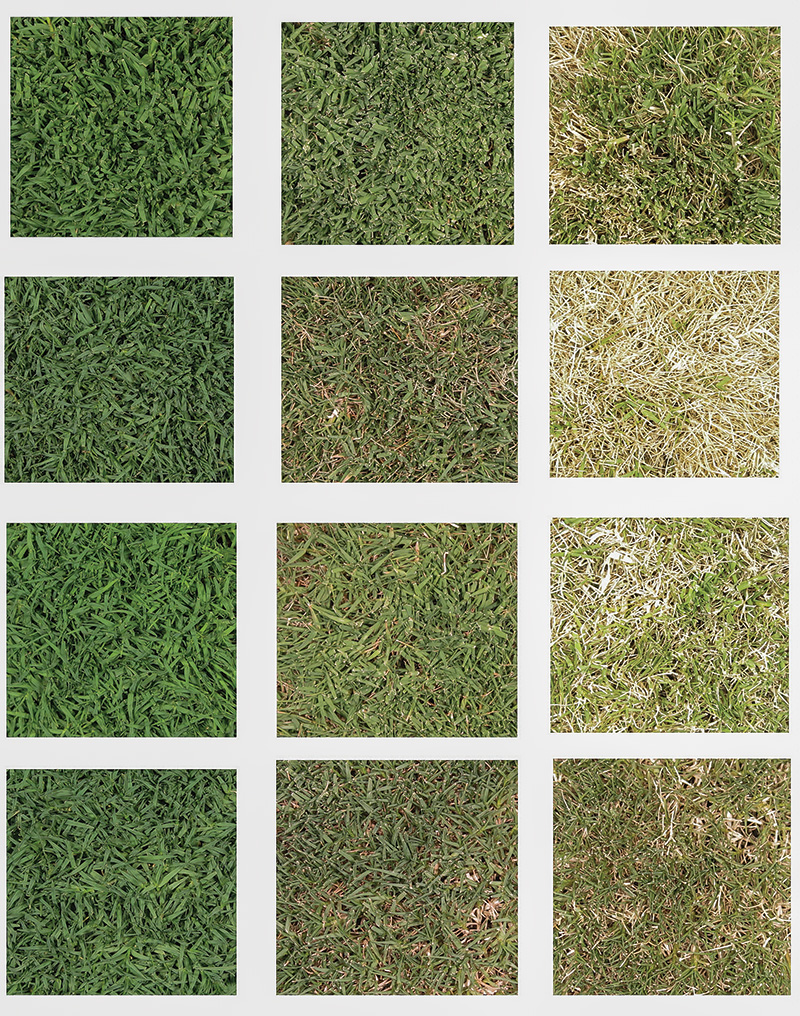
Figure 2. Appearance of various bermudagrass varieties in the project at different stages of drought stress: 1, 10 and 20 days after drought (DAD) initiation. During this period, each lysimeter was restricted to a daily water loss of 10% of the estimated total transpirable soil water.
Evaluating drought resistance in hybrid bermudagrasses
In 2022 and 2023, a greenhouse study was conducted at Oklahoma State University to evaluate the drought resistance of four turf-type hybrid bermudagrass varieties: Tifway, TifTuf, Tahoma 31 and an experimental variety of the University of Georgia, TifB16117. The experiment was conducted using lysimeters built from polyvinyl chloride (PVC) tubes, measuring 4 inches (10.2 centimeters) in diameter and 24.8 inches (63 centimeters) deep (Figure 1), which were filled with porous ceramic (Profile Field & Fairway, Profile Products LLC, Buffalo Grove, Ill.). The total weight of each lysimeter was recorded before planting and after it had reached drained pot capacity.
After grasses established mature root systems, they were subjected to drought in two separate experimental runs, with one lasting 25 days and another lasting 28 days. During these drought periods, fertilization was discontinued, and each lysimeter was limited to a daily water loss of 10% of the estimated total transpirable soil water (TTSW). Any excess water loss was replenished to ensure a gradual drying process. The TTSW, calculated as 20% of the drained pot capacity, was determined based on weight differences measured before planting and at the start of the experiment.
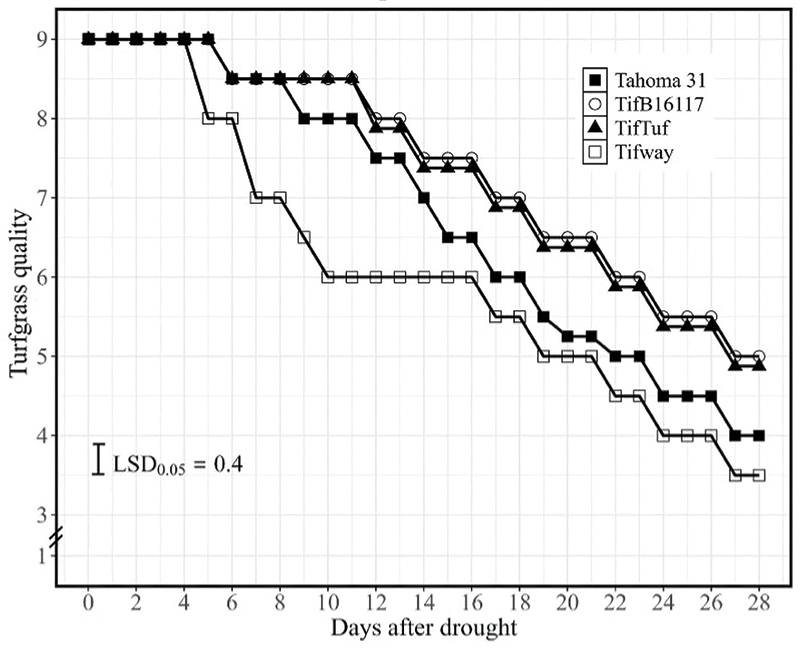
Figure 3. Turf quality of four bermudagrass genotypes under drought conditions. During the study, each lysimeter was permitted a daily water loss of up to 110 g, which corresponds to 10% of the total estimated transpirable soil water. Least significant difference (LSD) values were calculated for comparisons across all days at the P < 0.05 significant level.
Key measurements and findings
Throughout the drought periods, researchers monitored key growth and physiological responses. For simplicity, data from only one experimental run are presented in this article.
Turf quality (TQ): Visually rated daily on a scale of 1 to 9, where 1 indicates poor quality, 9 indicates outstanding/ideal turf, and 6 represents acceptable turf quality. TifB16117 and TifTuf maintained better TQ, while Tifway experienced significant declines after just a few days of drought stress (Figures 2 and 3). This suggests that TifB16117 and TifTuf are better candidates for regions where drought stress is common.
Normalized difference vegetation index (NDVI): Measured daily using the FieldScout TCM 500 NDVI Turf Color Meter (Spectrum Technologies, Plainfield, Ill.), NDVI is a remote sensing tool used to measure vegetation health and vitality, with higher values indicating healthier, more vigorous plants (Figure 4). TifB16117 and TifTuf consistently exhibited the highest NDVI values, indicating their ability to maintain healthy vegetation during drought. In contrast, Tifway showed declines in NDVI, suggesting it suffered more under drought conditions.
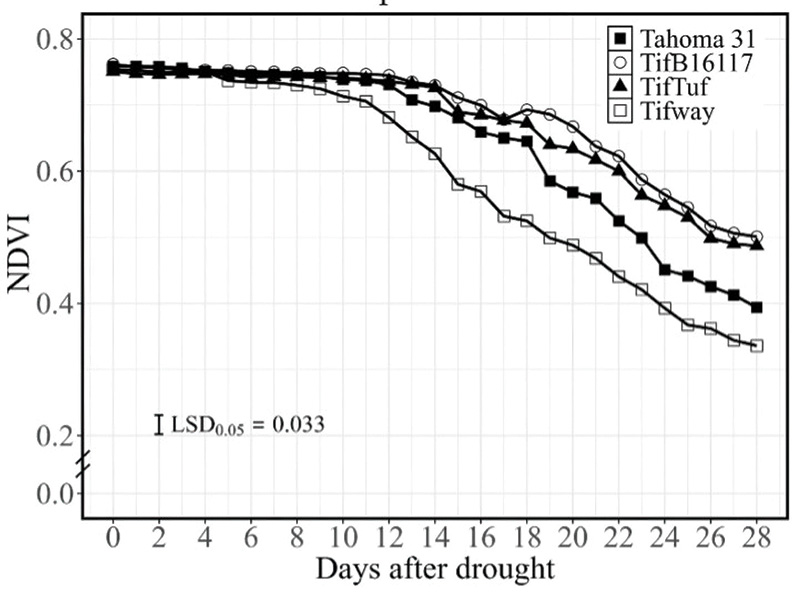
Figure 4. Normalized difference vegetative index (NDVI) of bermudagrass genotypes under drought conditions. During
the study, each lysimeter was permitted a daily water loss of up to 110 g, which corresponds to 10% of the total estimated transpirable soil water. Least significant difference (LSD) values were calculated for comparisons across all days at the P < 0.05 significant level.
Percent green cover (PGC): Digital images were taken daily using a camera (PowerShot G15, Canon USA Inc.) mounted on a portable standard light box. The images were processed using TurfAnalyzer software to quantify PGC (5). Tifway dropped below 75% PGC by day 10, followed by Tahoma 31 (day 13), TifTuf (day 15) and TifB16117 (day 16) (Figure 5). Tifway fell below 50% by day 12 and 25% by day 18. Tahoma 31 declined below 50% on day 18 and 25% on day 22, while TifTuf dropped below 50% on day 19 and 25% on day 24. TifB16117 fell below 50% on day 21 and 25% on day 27. TifB16117 outperformed TifTuf from days 15-20.
Evapotranspiration (ET): Cumulative evapotranspiration (ETcu) was calculated by tracking daily water loss through the weight of each lysimeter over the study period. TifB16117 and TifTuf (though not significantly different from Tahoma 31) exhibited the highest ETcu rates, demonstrating their ability to maintain metabolic activity even as soil water content diminished (Table 1). This suggests that TifB16117 and TifTuf can extract water more effectively at low soil water contents during drought. In contrast, Tifway showed the lowest ETcu rates, indicating a smaller pool of plant-available water. Whether this is due to root depth, rooting density or root morphology remains unclear.
Electrolyte Leakage (EL): EL is used to measure cell membrane stability during stress, with higher EL indicating greater damage to the plant’s cells. TifB16117 exhibited the lowest levels of EL, indicating better cellular integrity during drought (Table 1). Tifway showed the highest levels of EL, suggesting it experienced more severe cellular damage under drought conditions.
Relative vertical growth (RVG): Canopy height was measured initially after seven days and subsequently on a weekly basis. RVG was calculated by comparing the vertical growth of drought-stressed grasses to that of the control. TifB16117 and TifTuf exhibited strong relative vertical growth three weeks after drought, outperforming Tifway and Tahoma 31 (Table 1). This suggests that TifB16117 and TifTuf possess better mechanisms for sustaining growth under drought.
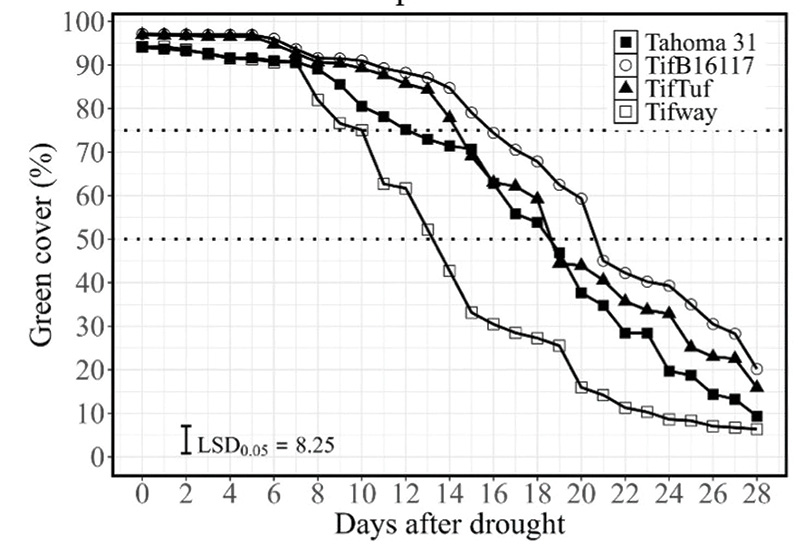
Figure 5. Percent green cover of bermudagrass genotypes under drought conditions. During the study, each lysimeter was permitted a daily water loss of up to 110 g, which corresponds to 10% of the total estimated transpirable soil water. The dotted lines indicated decrease in green coverage to 75% and 50%, respectively. Least significant difference (LSD) values were calculated for comparisons across all days at the P < 0.05 significant level.
Conclusion
This study revealed significant variations in drought resistance among the tested hybrid bermudagrasses. Tifway, the widely recognized industry standard, performed poorly under drought conditions, struggling to maintain key quality metrics, such as TQ, NDVI and PGC, and RVG. These findings are consistent with previous studies that have documented the poor performance of Tifway under drought stress in field conditions (4, 7, 9, 10).
In contrast, TifTuf consistently demonstrated better performance under drought stress. This aligns with Jespersen et al. (4), who reported TifTuf's exceptional drought resistance, including its ability to endure intermediate drought conditions for up to 28 days, outperforming many other bermudagrasses.
Electrolyte leakage, an indicator of cell membrane stability, increased across all genotypes under drought periods, indicating potential disruptions in cellular integrity. Tifway exhibited the highest EL levels, which aligns with the findings by Lv et al. (6), who noted elevated EL levels in Tifway under drought conditions.
While reduced evapotranspiration (ET) under non-water-restricting conditions is often considered beneficial for drought resistance, both TifTuf and TifB16117 exhibited higher ETcu than Tifway throughout the drought period. This suggests that TifTuf and TifB16117 can uptake water more effectively at low soil water contents.
Although root dynamics were not directly studied, it is likely that these genotypes employ effective drought-avoidance strategies, such as deeper root systems or greater water-uptake ability.
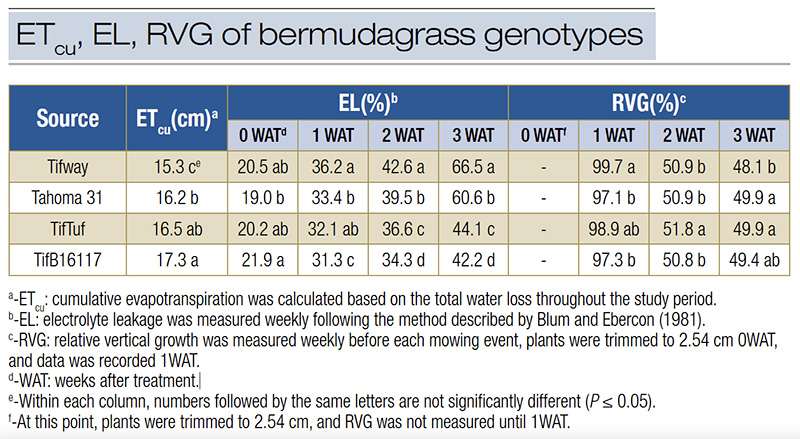
Table 1. Cumulative evapotranspiration (ETcu), electrolyte leakage (EL) and relative vertical growth (RVG) of bermudagrass genotypes under drought conditions evaluated between Jan. 30, 2023, to Feb. 28, 2023.
Take-home message
For turfgrass managers in arid and semi-arid regions, these findings offer valuable guidance for selecting bermudagrass varieties that perform well under water-limited conditions. Current cultivars with proven drought resistance provide reliable options, while ongoing breeding efforts continue to deliver improved varieties for golf courses and other high-value turf areas. With promising new cultivars on the horizon, the future holds even greater potential for better performance and resilience in drought conditions.
The research says
- Tifway, the widely recognized industry standard, performed poorly under drought conditions, struggling to maintain key quality metrics.
- TifTuf consistently demonstrated better performance under drought stress.
- The research suggests that TifTuf and TifB16117 can uptake water more effectively at low soil water contents.
- With promising new cultivars on the horizon, the future holds even greater potential for better performance and resilience in drought condition.
Acknowledgments
This work was funded primarily by the United States Department of Agriculture Specialty Crop Research Initiative (2019-1455-05/2019-51181-30472) and the Oklahoma Agricultural Experiment Station.
This article is intended for educational purposes. Further comprehensive information can be accessed in our original publication in International Turfgrass Society Research Journal, 1-12 (https://doi.org/10.1002/its2.178).
Literature cited
- Amgain, N.R., D.K. Harris, S.B. Thapa, D.L. Martin, Y. Wu and J.Q. Moss. 2018. Evapotranspiration rates of turf bermudagrasses under nonlimiting soil moisture conditions in Oklahoma. Crop Science 58(3):1409-1415 (https://doi.org/10.2135/cropsci2017.08.0493).
- Beard, J.B. 1973. Turfgrass: Science and Culture. Prentice Hall, Upper Saddle River, N.J.
- Fry, J.D. 1990. Cold temperature tolerance of bermudagrass. Golf Course Management 58:26-28.
- Jespersen, D., M. Leclerc, G. Zhang and P. Raymer. 2019. Drought performance and physiological responses of bermudagrass and seashore paspalum. Crop Science 59(2):778-786 (https://doi.org/10.2135/cropsci2018.07.0434).
- Karcher, D.E., and M.D. Richardson. 2003. Quantifying turfgrass color using digital image analysis. Crop Science 43(3):943-951 (https://doi.org/10.2135/cropsci2003.9430).
- Lv, A., N. Fan, J. Xie, S. Yuan, Y. An and P. Zhou. 2017. Expression of CdDHN4, a novel YSK2-type dehydrin gene from bermudagrass, responses to drought stress through the ABA-dependent signal pathway. Frontiers in Plant Science 8:748 (https://doi.org/10.3389/fpls.2017.00748).
- Schwartz, B.M., W.W. Hanna, L.L. Baxter, P.L. Raymer, F.C. Waltz, A.R. Kowalewski, A. Chandra, A.D. Genovesi, B.G. Wherley, G.L. Miller and S.R. Milla-Lewis. 2018. ‘DT-1’, a drought-tolerant triploid turf bermudagrass. HortScience 53(11):1711-1714 (https://doi.org/10.21273/HORTSCI13083-18).
- Shi, H., Y. Wang, Z. Cheng, T. Ye and Z. Chan. 2012. Analysis of natural variation in bermudagrass (Cynodon dactylon) reveals physiological responses underlying drought tolerance. PLoS One 7(12):e53422 (https://doi.org/10.1371/journal.pone.0053422).
- Steinke, K., D. Chalmers, J. Thomas and R. White. 2011. Bermudagrass and buffalograss drought response and recovery at two soil depths. Crop Science 51(3):1215-1223 (https://doi.org/10.2135/cropsci2010.08.0469).
- Yu, S., D.L. Martin, J.Q. Moss and Y. Wu. 2023. Advanced turf-type bermudagrass experimental genotypes show marked variation in drought response. HortScience 58(6):600-607 (https://doi.org/10.21273/HORTSCI17085-23).
Mingying Xiang (my.xiang@okstate.edu) is an assistant professor, and Justin Q. Moss and Dennis L. Martin are professors; Shuhao Yu is a research assistant professor; Charles H. Fontanier is an associate professor; and Snigdha Arikilla is a graduate research assistant, all in the Department of Horticulture and Landscape Architecture, Oklahoma State University; and Yanqi Wu is a regents professor in the Department of Plant and Soil Sciences, Oklahoma State University.